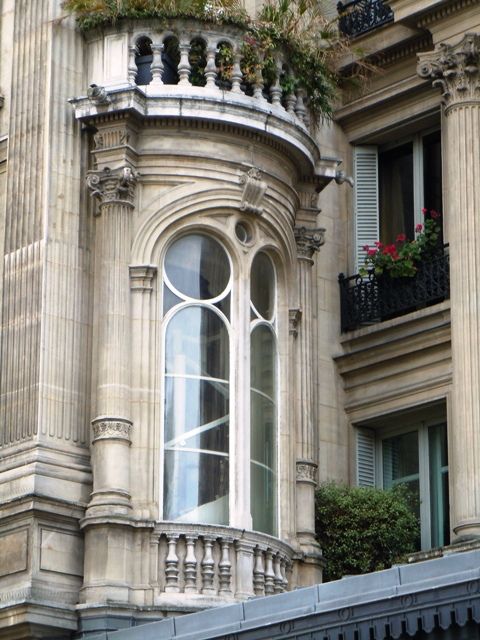#6166. Elegant Parisian Oriel: A Symbiosis of Classicism and Second Empire Refinement

The photograph captures a magnificent fragment of a building facade in classical French style, likely from the Second Empire period (1852-1870) or early Third Republic. Of particular interest is the semicylindrical bay window (oriel), framed by refined architectural details.
The bay window is adorned with a tall arched window of special construction, featuring a distinctive geometric pattern in its frame. The window's framing employs classical elements: half-columns and pilasters with Corinthian capitals supporting an entablature. Above the window sits a small balcony with a balustrade of ornate balusters, adding additional plasticity and volume to the composition.
The building facade is constructed from light-colored stone with vertical articulation in the form of fluted pilasters. To the right, another element is visible — a window with a decorative wrought-iron balcony housing flowering plants, which is characteristic of Parisian architectural tradition. The upper part of the bay window is also adorned with living plants, softening the strictness of the stone architecture and giving the building an inhabited, lived-in character.
Particularly impressive is the mastery of stone carving evident in the details of the capitals and cornices, as well as the proportionality of all elements, creating a harmonious composition. Such architecture is a striking example of French academicism, where classical forms are interpreted with the luxury and sophistication characteristic of 19th century architecture.